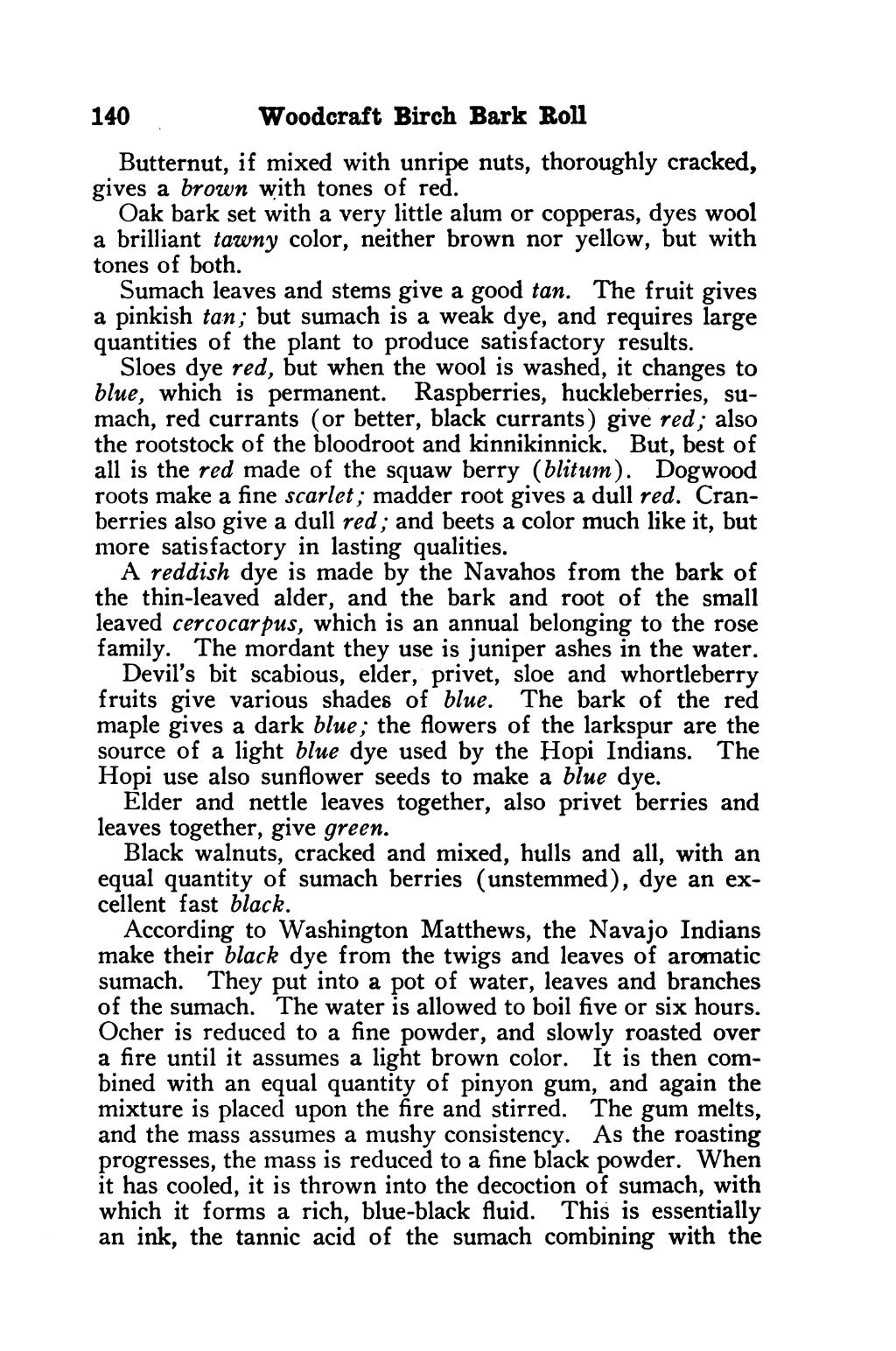140 Woodcraft Birch Bark Roll Butternut, if mixed with unripe nuts, thoroughly cracked, gives a brown with tones of red. Oak bark set with a very little alum or copperas, dyes wool a brilliant tawny color, neither brown nor yellow, but with tones of both. Sumach leaves and stems give a good tan. The fruit gives a pinkish tan; but sumach 1s a weak dye, and requires large quantities of the plant to produce satisfactory results. Sloes dye red, but when the wool is washed, it changes to blue, which is permanent. Raspberries, huckleberries, su- mach, red currants (or better, black currants) give red; also the rootstock of the bloodroot and kinnikinnick. But, best of all is the red made of the squaw berry (blitum). Dogwood roots make a fine scarlet ; madder root gives a dull red. Cran- berries also give a dull red ; and beets a color much like it, but more satisfactory in lasting qualities. A reddish dye is made by the Navahos from the bark of the thin-leaved alder, and the bark and root of the small leaved cercocarpus, which is an annual belonging to the rose family. The mordant they use is juniper ashes in the water. Devil’s bit scabious, elder, privet, sloe and whortleberry fruits give various shades of blue. The bark of the red maple gives a dark blue; the flowers of the larkspur are the source of a light blue dye used by the Hopi Indians. The Hopi use also sunflower seeds to make a blue dye. Elder and nettle leaves together, also privet berries and leaves together, give green. Black walnuts, cracked and mixed, hulls and all, with an equal quantity of sumach berries (unstemmed), dye an ex- cellent fast black. According to Washington Matthews, the Navajo Indians make their black dye from the twigs and leaves of aromatic sumach. They put into a pot of water, leaves and branches of the sumach. The water is allowed to boil five or six hours. Ocher is reduced to a fine powder, and slowly roasted over a fire until it assumes a light brown color. It is then com- bined with an equal quantity of pinyon gum, and again the mixture is placed upon the fire and stirred. The gum melts, and the mass assumes a mushy consistency. As the roasting progresses, the mass is reduced to a fine black powder. When it has cooled, it is thrown into the decoction of sumach, with which it forms a rich, blue-black fluid. This is essentially an ink, the tannic acid of the sumach combining with the
Stránka:roll 1931.djvu/156
Z thewoodcraft.org
Tato stránka nebyla zkontrolována
